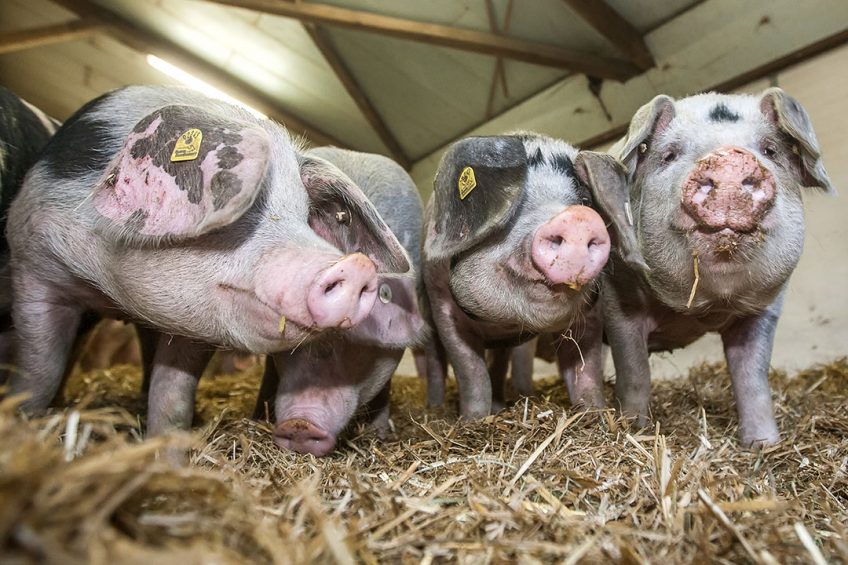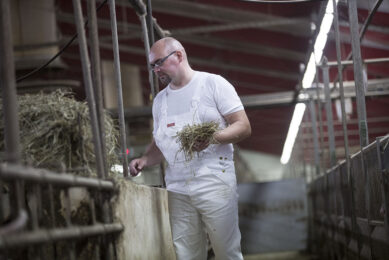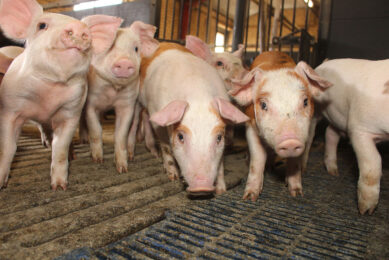Straw increases feed intake in growers

The provision of straw to grow-finisher pigs appears to have a positive effect on feed intake.
That was the conclusion of recently published work by researchers of Aarhus University and the University of Copenhagen, both in Denmark. The study was recently published in the peer-reviewed journal Animal.
At the onset of their article, the researchers stated that the effects of straw on pig performance hitherto had been unclear, although it was known that the provision of straw to pigs kept in conventional pens with concrete floor improves animal welfare.
Relationship between straw amount and performance
The researchers described how, in 2 steps, they investigated the relationship between amount of straw provided to pigs and measures of performance in a set-up maintaining constant space allowance and controlled room temperature.
From about 30 to 85 kg body weight, pigs were housed in groups of 18 in pens with a concrete floor. The pens were cleaned manually twice a week, and the designated amount of fresh uncut wheat straw was provided daily onto the solid part of the floor.
• In the 1st step, the researchers assigned 48 pens to 10g, 500g or 1kg straw per pig per day;
• In the 2nd step, they assigned 90 pens to 10g, 80g, 150g, 220g, 290g, 360g, 430g or 0.5kg straw per pig per day.
Higher average daily gain due to straw
Pigs were weighed at the start of the experimental period at about 30 kg and again at about 85kg body weight. The average daily gain (ADG) increased 8.1 g for every extra 100g straw added daily resulting in 40g higher ADG with 500 compared to 10g straw per pig per day.
Recently, Dr Irene Camerlink of the University of Vienna discussed the use of straw (or not) in this insightful analysis.
The feed conversion ratio (FCR) was not affected by the amount of straw provided, as the feed intake tended to be higher with increasing amounts of straw. Thus, between 10 and 500 g, the more straw provided, the higher the daily weight gain.
Nutritional value is considered minimal
As the nutritional value of straw is considered minimal, this result is likely due to improved gut health from the increasing amounts of straw ingested and increased feed intake due to increased stimulation of exploratory behaviour with increasing amounts of straw available, or a combination of these.
The observed tendency for a higher feed intake supports that suggestion, the team of scientists wrote. They added that more studies are needed to establish the impact of these 2 contributing factors.
The study in Animal was carried out by M.B. Jensen, M.S. Herskin, N. Canibe and L.J. Pedersen, Aarhus University, Denmark and B. Forkman, University of Copenhagen, Denmark.











